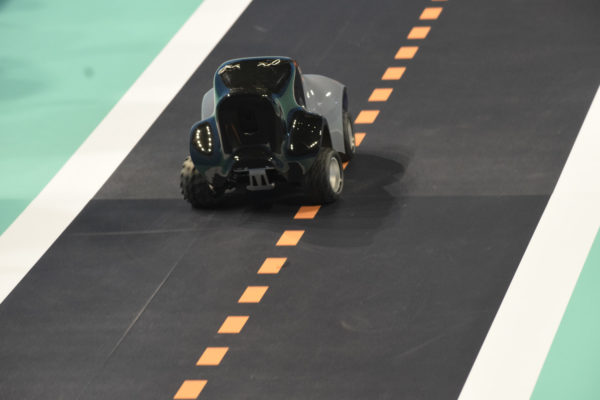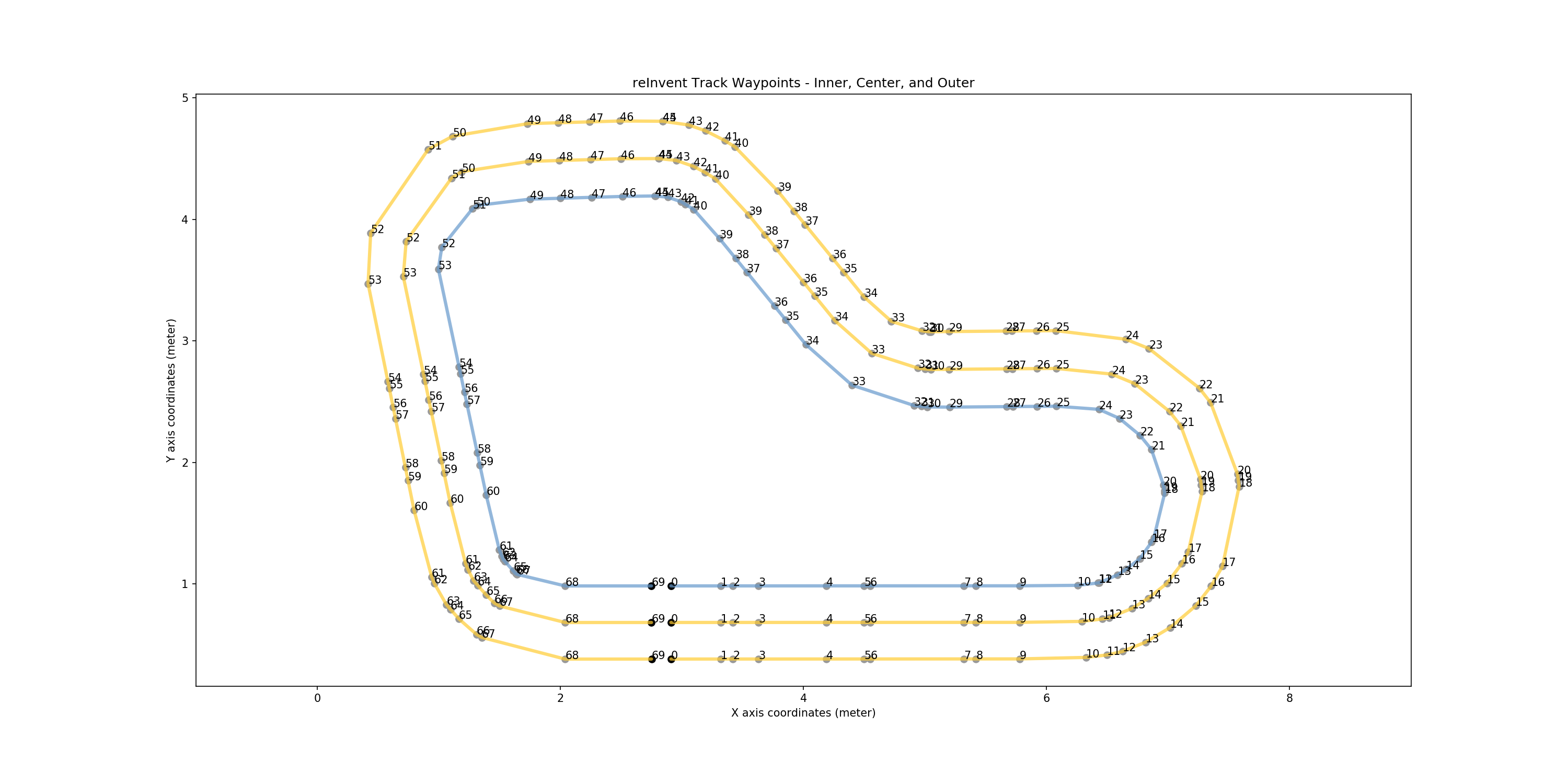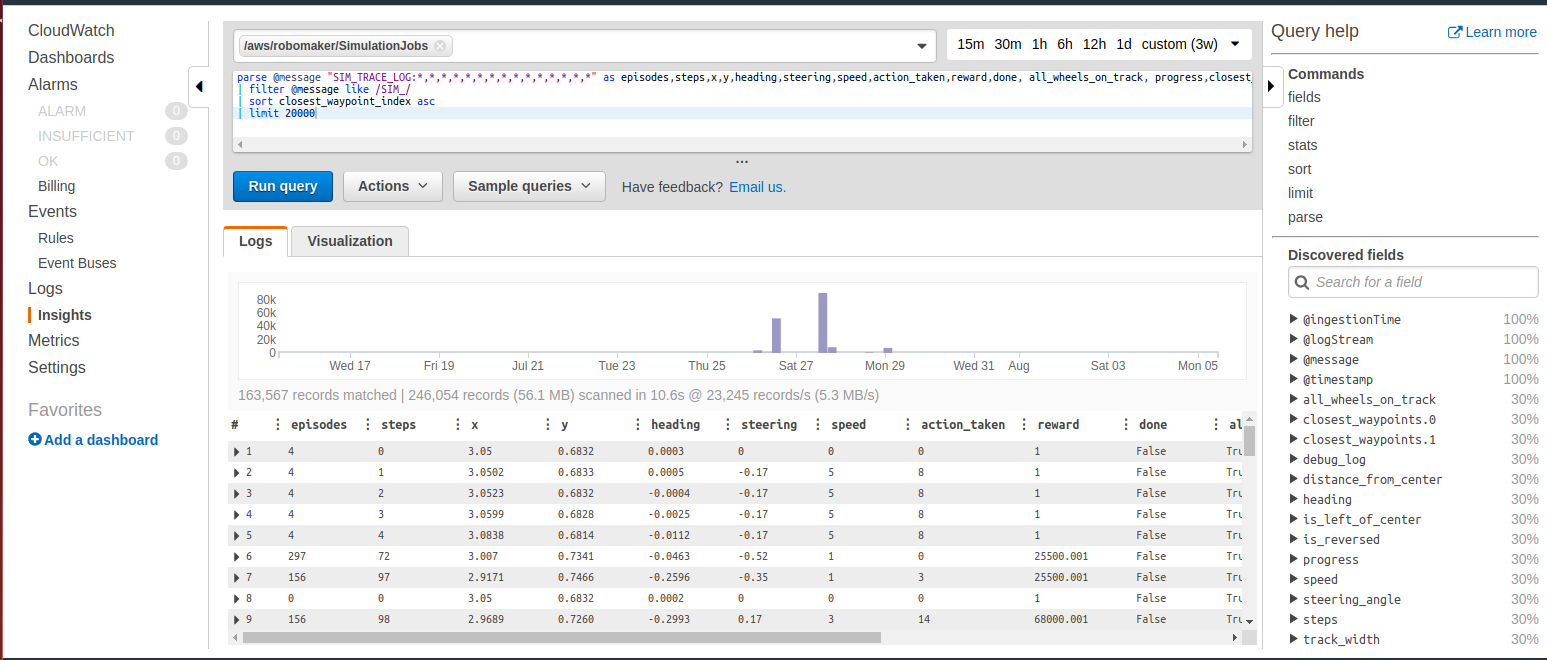AWS DeepRacer – reward_function() to start easily
The code presented here is a reward function() for the AWS DeepRacer vehicle training tasks (Reinforcement Machine Learning). It is an outcome of the participation on Honeywell AI day competition.
Compared to other reward functions presented on the Internet this code is bringing a much better level of the problem abstraction and is allowing easy and safe changes in the reward strategies. This approach is a big benefit also for non-pythonic programmers allowing them to build complex reward strategy with a minimum knowledge of the Python syntax.
Example: the following fragment of the ubiquitous 'many-lines' code:
def reward_function(params):
waypoints = params['waypoints']
closest_waypoints = params['closest_waypoints']
heading = params['heading']
reward = 1.0
next_point = waypoints[closest_waypoints[1]]
prev_point = waypoints[closest_waypoints[0]]
track_direction = math.atan2(next_point[1] - prev_point[1], next_point[0] - prev_point[0])
track_direction = math.degrees(track_direction)
direction_diff = abs(track_direction - heading)
if direction_diff > 180:
direction_diff = 360 - direction_diff
DIRECTION_THRESHOLD = 10.0
if direction_diff > DIRECTION_THRESHOLD:
reward *= 0.5
return rewardcan be easily replaced by just a couple of lines:
reward = 1.0
if abs(self.get_car_heading_error()) <=DIRECTION_THRESHOLD:
reward *= 0.5
return rewardFocus on building your strategy instead of producing lines of code :-)
Moreover in the code is possible to enable easy status and reward evaluation logging, each functionality can be tested (unit tests included) and the expected output of some functions can be shown and finetuned prior the deployment (e.g. speed or distance to the centerline before the turn, passing waypoint, …etc.).
This is the full list of implemented functions and methods you can easily use and still combine with any underlying function or status value:
def get_way_point(self, index_way_point)
def get_way_points_distance(previous_waypoint, next_waypoint)
def get_heading_between_waypoints(previous_waypoint, next_waypoint)
def get_car_heading_error(self)
def get_optimum_speed_ratio(self)
def get_turn_angle(self)
def is_in_turn(self)
def reached_target(self)
def get_expected_turn_direction(self)
def is_in_optimized_corridor(self)The signatures are self-explaining, for more detail please read commented lines in the source code. The reward value is calculated by the RewardEvaluator class which has implemented the above-mentioned set of features relevant to the calculation of the reward value based on input values describing the "situation" (conditions).
class RewardEvaluator:
def get_car_heading_error(self):
...
def get_expected_turn_direction(self):
...
.... implemented set of other basic functions
def evaluate(self):
...implemented reward logic, calculated based on basic functions
return float(retval)
def reward_function(params):
re = RewardEvaluator(params)
return float(re.evaluate())There were two good reasons to use "class" approach instead of simple function like many other examples available on the Internet:
- the first reason was one Class is better for readability (instead of functions and subroutines) and
- the second reason was easier testing.
I recommend you to keep this approach unless you want to lose a lot of time when looking for buggy code when you are designing more complex reward strategies. All these features presented here are having their tests (see test_reward.py). Extend it according to your needs. You save a lot of time and it will pay back soon!
From the set of implemented features, you can easily choose what best fits to your requirements. The calculation logic itself you are supposed to implement in the method evaluate(). It is up to you to combine features, use weights, change logic, priorities...whatever you need to develop the reward function and train your best model :-)
The reward function presented here has been intended to be used for reInvent2018 circuit track but you can use it for any existing circuit track. It will well perform for training as well for evaluation on any circuit.
The reInvent2018 track consists of the following waypoints:
The length of the track is approx. 17.5 m and the track width is 1.2 m. After 1 hour of training, the model will most probably need in average 20 seconds to finish the lap. The challenge is to reach less than 10 seconds (training time required >4h).
Log Analysis
I recommend you to use logs to analyze the performance of your model. The log is a very valuable source of information you need to fine-tune the performance. Default query to start the analysis is as follows:
filter @message like /^SIM_TRACE_LOG/
| parse @message "SIM_TRACE_LOG:*,*,*,*,*,*,*,*,*,*,*,*,*,*,*" as episodes,steps,x,y,heading,steering,speed,action_taken,reward,done, all_wheels_on_track, progress,closest_waypoint_index,track_length,time
| sort by episodes, closest_waypoint_index, steps asc
| limit 1000Query example to check average speed sorted by closest waypoints:
parse @message "SIM_TRACE_LOG:*,*,*,*,*,*,*,*,*,*,*,*,*,*,*" as episodes,steps,x,y,heading,steering,speed,action_taken,reward,done, all_wheels_on_track, progress,closest_waypoint_index,track_length,time
| stats avg(speed) by closest_waypoint_index
| filter @message like /SIM_/
| sort closest_waypoint_index asc| Waypoint | Avg speed [m/s] |
|---|---|
| 0 | 2.9113 |
| 1 | 2.9532 |
| 2 | 2.8414 |
| 3 | 2.8023 |
| 4 | 2.7969 |
| 5 | 2.7346 |
| ... and more |
You may need temporarily log input parameters or debug your code. To log anything you just do print() and the output is saved to log. For reach status logging uncomment one line (self.status_to_string()) in the evaluate() method. You can then find in the log logged status for every evaluation of the reward (each simulation/training step). This you will find very useful when debugging or finetuning the performance.
WARNING: Do not use logging too much. Unless it is worth to spend your money. For every logging attempt, Amazon is charging you :-). A few hours of training can cost you a few dollars! Less you spend logging more you can spend on training.
class RewardEvaluator:
def status_to_string(self):
status = self.params
#if 'waypoints' in status: del status['waypoints']
status['debug_log'] = self.log_message
print(status)
def evaluate(self):
...
#self.status_to_string()
return float(retval)
def reward_function(params):
re = RewardEvaluator(params)
return float(re.evaluate())To gain better results (aim is to train the car to drive as fast as possible and finish the lap in the shortest time possible), you need to further fine-tune the reward_function code (in Python) and then set proper parameters for the Neural network. The design of the reward function itself is approx. 50% of the job. The rest you can gain by right training time and setting of training parameters.
Once you are fine with the reward logic, focus on hyperparameters. For initial run keep default values and let it be learning for approx 20 minutes. The car will be driving still crazy but you will get an idea about the convergence and learning speed. My first option is to focus on gradient descent parameter to ensure the model is learning gradually and the learning curve is smooth. Do not be frustrated once you let it train and after 2 hours the only achievement is 75% ration of successfully finished tasks. Do not panic - even this ratio of finished tasks will let your model already finish 95% of laps when on the real circuit track.
Best performing models (Gopi, Neeraj, Poching) were trained for 6-12 hours, mainly using still somehow simple reward strategies. Models having hardcoded reward based on waypoints (designed for one particular circuit track) were demonstrating over fitting very soon - approx. after 6 hours of training.
Good luck to use the code and find a better combination of implemented features!
Links
https://codelikeamother.uk/using-jupyter-notebook-for-analysing-deepracer-s-logs
https://docs.aws.amazon.com/deepracer/latest/developerguide/deepracer-reward-function-input.html
https://aws.amazon.com/blogs/aws/new-amazon-cloudwatch-logs-insights-fast-interactive-log-analytics/
https://docs.aws.amazon.com/AmazonCloudWatch/latest/logs/CWL_QuerySyntax-examples.html
Vilem Reznicek | Reinforcement learning | Machine learning | Python | 2019 Honeywell AI day


